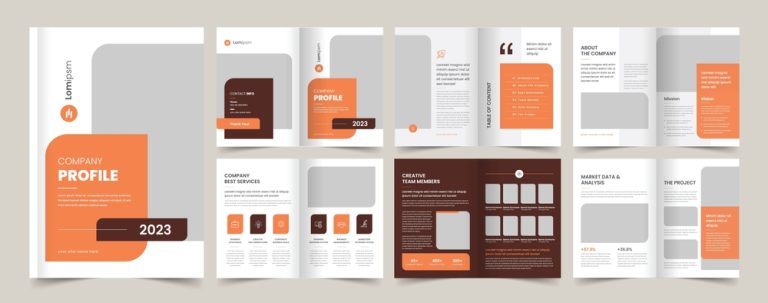How to Build Trust Through Healthcare Branding for Multi-Location Practices
Trust is a tricky word in healthcare. It’s not just about a logo or the color scheme on a website; it’s about whether patients believe that you’ll deliver on your promise. And when you run a multi-location healthcare practice, that question becomes even bigger: The real question becomes: how do you build trust through healthcare branding across every office, every website page, every social media channel, and every piece of signage?
It’s tempting to think branding is mostly visuals, but patients see it differently. They don’t separate the front desk interaction from the website experience or the doctor’s tone from the online reviews. It all blurs together. That’s where healthcare branding comes in, and, frankly, why it matters so much for practices trying to grow in competitive markets like Florida, especially places like Jacksonville, where healthcare options are everywhere.
So, let’s walk through it. Not in a checklist way, but in a practical way that mirrors how patients really interact with your brand.
The Challenge of Scaling Trust Across Multiple Locations
Think about a patient who lives in Jacksonville but occasionally drives to Orlando for work. If your healthcare organization has clinics in both cities, they’ll probably interact with both. What happens if your Jacksonville facility has warm, welcoming signage and easy-to-navigate appointment scheduling, but the Orlando one looks dated, with a clunky patient portal?
That’s when cracks appear.
Patients notice inconsistencies faster than we realize. Even subtle things, such as different logo treatments on signage, social media pages with varying tones, or mismatched marketing collateral, can leave patients second-guessing. In healthcare, second-guessing often leads to hesitation, and sometimes even distrust.
Florida providers, especially those expanding into new cities, face an added challenge: patients often search locally first. A quick “pediatrician in Jacksonville Beach” or “urgent care Orlando” pulls up Google review pages, online ratings, and website snippets. If one location looks polished and consistent but another has mixed branding or lower feedback scores, brand trust takes a hit.
It’s not always fair, but perception drives decisions.
Multi-Platform Consistency: More Than Just Marketing
Branding isn’t only about looking unified, it’s about feeling unified. Patients expect your digital world and physical world to align. Let’s break it down a bit:
1. Website Consistency
A healthcare website often acts as the first handshake. If each location page feels like it belongs to a different practice, you’re not building trust; you’re fragmenting it.
Healthcare providers should think about:
- Visual Identity: same logo, typography, colors. Not approximate, not similar, exact.
- Navigation: whether you’re in Jacksonville or Tampa, the menu should work the same.
- Location Pages: customized with local details but tied to a central brand structure.
It may seem obvious, but I’ve seen practices where the Orlando page has a different tone from the Jacksonville one, almost like they were written years apart. That inconsistency may not scream “untrustworthy,” but it does whisper, “disorganized.”
2. Social Media
Social channels are where patients often get a casual feel for your healthcare organization. Do all your accounts speak in the same voice? Or does the Orlando Facebook page sound formal while the Jacksonville Instagram reels lean casual?
The goal isn’t cookie-cutter sameness. Local touches matter. But your overall tone, supportive, professional, and approachable, should carry across.
Some healthcare branding agencies even recommend centralizing content in a brand portal or digital asset management system so staff at different facilities aren’t reinventing posts. It makes campaigns smoother and protects brand equity.
3. Physical Branding and Signage
If you’ve ever walked into a healthcare facility and wondered, “Am I in the right place?” then you know how important signage and interiors are. Consistent branding elements, colors, fonts, even soft architectural curves or local artwork signal that patients are in familiar territory.
For Florida, durability matters too. Sun and hurricane conditions can wear down signs quickly. If one location’s sign is faded while another looks new, patients will feel a subtle imbalance in brand perception.
Localized Identity Without Losing Cohesion
Now, there’s a paradox. Patients want familiarity across locations, but they also want local relevance.
Say your practice in Jacksonville sponsors a community 5K. That should appear on the Jacksonville social media channels and possibly on the local website page. But the Orlando location might focus on school health fairs. Each story is local, but the style of storytelling, the tone, and the brand symbol stay consistent.
This approach also works for reviews and testimonials. Sharing local patient experiences builds credibility in specific markets. A parent in Jacksonville may connect more strongly to another Jacksonville parent’s testimonial than to a story from across the state.
Healthcare organizations can balance both by sticking to central brand guidelines while giving each location flexibility for local highlights.
Trust Is Also About the Digital Experience
Consistency extends beyond what patients see. It’s also how they interact.
Imagine booking an appointment. If the Orlando online scheduling tool is streamlined but Jacksonville still uses phone-only booking, patients might assume one location is “better” than the other. That erodes trust across the whole network.
The same goes for patient portals, telehealth platforms, and even automated reminders. Seamless digital interaction reinforces brand reliability.
Florida adds a layer here, too: bilingual communication. In many regions, offering both English and Spanish communications isn’t just convenient, it’s essential for building patient trust and improving health communication.
How to Build Trust Through Healthcare Branding | Actionable Branding Strategies
At this point, the question becomes practical: what can you do to bring consistency and trust to your brand? Here’s a loose set of strategies, though not a perfect list, because every practice has its quirks.
- Brand Audit. Start by evaluating both physical and digital brand assets. Walk into your Jacksonville office, then check your Orlando website. Do they feel aligned?
- Develop a Brand Style Guide. Fonts, colors, tone of voice, and even preferred imagery. This isn’t fluff, it’s a roadmap.
- Use a Brand Portal or Digital Asset Management Tool. Keeps signage templates, social graphics, and patient communication tools centralized.
- Train Staff. Your front desk staff in Tampa should know the same talking points as those in Jacksonville. That’s stakeholder alignment in action.
- Leverage Local SEO. Don’t just optimize for “healthcare providers Florida.” Focus on Jacksonville healthcare branding, Orlando clinics, Tampa urgent care searches. Patients search by ZIP codes and neighborhood names.
- Monitor Online Reviews. Encourage feedback. Respond to negative online ratings quickly. Your Google review page is often more visible than your homepage.
- Test Brand Perception. Use focus groups, healthcare newsletters, or even informal surveys. Market research doesn’t have to be intimidating.
Branding in the Larger Healthcare Landscape
There’s a broader point here, too. Healthcare branding isn’t just about logos, websites, or signage. It’s about public health branding as well; how your organization fits into the bigger community conversation.
Think of mass media campaigns like the “truth campaign” against smoking. They didn’t just tell people cigarettes were harmful. They created emotional ties, applied marketing theories like social cognitive theory, and tapped into behavioral interventions.
While your practice may not be launching national campaigns, the lesson still applies: branding shapes behavior. A strong, consistent brand identity can encourage patient loyalty, influence healthcare decisions, and even improve adherence to treatment plans.
A Quick Word on Compliance and Regulation
It’s worth mentioning that branding doesn’t live in a vacuum. Healthcare providers also navigate HIPAA compliance, regulatory shifts, and sometimes even architectural requirements for branded healthcare environments.
Consistency has to operate within those boundaries. A healthcare branding agency can help balance creativity with regulatory compliance, making sure the mission statement and marketing collateral align with industry standards.
Building Emotional Ties Through Space and Story
We sometimes think patients don’t consciously notice branding elements like healthcare interiors or soft architectural curves, but subconsciously, they do. A waiting room filled with harsh lighting and no visual cues feels different from one that incorporates natural textures, local artwork, or even just consistent signage.
These physical details, along with digital cues, create the full patient experience. They help form emotional ties, which matter as much as clinical outcomes when it comes to patient loyalty.
Why Florida Practices Need to Think Bigger
The Florida healthcare market isn’t just competitive, it’s fragmented. Between urgent care chains, private practices, and hospital networks, the consumer pool has choices. That’s both an opportunity and a risk.
Growing networks that want market expansion into cities like Jacksonville, Orlando, and Tampa can’t rely on patchwork branding strategies. A cohesive identity builds the brand equity needed to compete not just on care quality but on patient trust.
It’s not about being flashy. It’s about being reliable. Patients should feel like they know what to expect from your healthcare facility, whether they walk in for a routine visit or schedule a telehealth appointment.
Conclusion
So, how to build trust through healthcare branding? It comes down to this: consistency creates credibility. Every website interaction, every piece of signage, every local event or social post, it all adds up. Patients may not consciously analyze brand strategies or market research, but they feel when a brand is steady, unified, and dependable.
For multi-location practices in Florida, the stakes are high. The healthcare landscape is crowded, patient experiences are publicly visible through online reviews, and public perception shifts rapidly. A thoughtful, unified approach to branding, anchored in strategy but flexible enough for local nuance, can set a growing network apart.
It won’t be perfect. Some contradictions will always creep in. A Google review here, a mismatched flyer there. But that’s where healthcare branding services in Jacksonville, like those offered by C7 Healthcare, come in. With clear brand guidelines, stakeholder alignment, and practical tools like digital asset management, your healthcare organization can build trust that truly scales.
And maybe, just maybe, the next time a patient walks into one of your clinics, whether in Jacksonville, Orlando, or Tampa, they won’t wonder if they’re in the right place. They’ll already know.
FAQs | How to Build Trust Through Healthcare Branding
1. Why is healthcare branding important for multi-location practices?
Healthcare branding helps create a consistent experience across different facilities. Patients expect the same level of trust and professionalism whether they visit your Jacksonville office or a clinic in Orlando. A unified brand identity reduces confusion, builds credibility, and supports long-term patient loyalty.
2. How can a healthcare branding agency help my practice in Florida?
A Healthcare Branding Agency provides medical branding services like brand guidelines, website redesign, social media management, signage planning, and market research. For Florida providers, an agency can also localize your brand, making sure your messaging resonates with Jacksonville audiences while staying consistent in Tampa or Miami.
3. What role do online reviews and ratings play in healthcare branding?
Online reviews directly influence patient trust and brand perception. Google review pages, feedback scores, and social channels are often the first things patients check before booking. Monitoring and responding to reviews builds patient confidence and strengthens your brand reputation.
4. How do you balance local identity with a consistent brand image?
Multi-location practices should use central brand guidelines while allowing for local touches. For example, your Jacksonville practice may highlight community events or local artwork, while your Orlando practice focuses on school partnerships. The overall tone, visuals, and messaging stay consistent, but local content helps patients connect on a personal level.
5. What are some key elements of healthcare brand identity?
Core elements include visual identity (logo, colors, typography), tone of voice, signage, website design, patient communications, and even healthcare interiors. Together, these cues create familiarity, reduce uncertainty, and help shape positive patient experiences.
6. How can healthcare organizations maintain consistency across social media?
Using a central brand portal or digital asset management tool ensures that all social media posts, graphics, and campaigns align with your overall strategy. Practices can still tailor content to their local community while maintaining the same brand voice and visual cues across channels.
7. Does healthcare branding also affect staff and internal culture?
Yes. Branding isn’t just for patients; it influences stakeholder alignment and staff behavior, too. When employees understand and embody your mission statement and brand strategies, the patient experience becomes more consistent and trustworthy across every touchpoint.
8. What’s the first step in building trust through healthcare branding?
Start with a brand audit. Evaluate your website, social media, signage, and patient interactions at each location. Look for inconsistencies and ask: Does this experience match our brand promise? From there, develop brand guidelines and begin rolling out improvements across both digital and physical environments.





